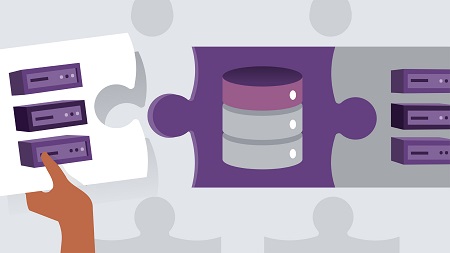
English | MP4 | AVC 1280×720 | AAC 48KHz 2ch | 2h 27m | 453 MB
SQL Server Integration Services (SSIS) is one of the core add-on components to SQL Server. With SSIS, professionals can create automated workflows that streamline the process of consolidating data from a wide variety of sources. Through a process called ETL—extract, transform, and load—you can ingest and move data between systems such as other databases, flat data files, and even online repositories. In this course, Adam Wilbert helps you get up and running with SSIS. Adam shows how to work with different control flow tasks, data sources, connections, and transformations. Plus, see how to add variables to control package execution, run packages with T-SQL, and more.
Topics include:
- Managing and administering SQL with SSIS tasks
- Making packages dynamic with variables and parameters
- Creating a sequence container
- Extracting data from a source
- Handling errors
- Running packages with T-SQL
- Scheduling packages with SQL Server Agent
Table of Contents
1 Integrate your data with SQL Server Integration Services (SSIS)
2 What you should know
3 Set up the example database
4 What is SSIS
5 Add SSIS to a SQL Server instance
6 Connect to the SSIS catalog database
7 Explore SSIS packages
8 Install SQL Server Data Tools (SSDT)
9 View SSIS solutions and projects
10 Define control flow tasks
11 Create a precedence constraint
12 Create a sequence container
13 Run a package
14 Understanding tasks in control flow
15 The Data Flow task
16 The File System tasks
17 Modify file attributes
18 The Execute Package task
19 The Send Mail task
20 SQL Server tasks
21 Maintenance tasks
22 Project level connections
23 Convert package connections
24 The Excel connection manager
25 Connect to flat file data sources
26 Additional connection managers
27 Data flow components
28 Extracting data from a source
29 Understand transformations
30 Character Map row transformation
31 Conditional Split transformation
32 Rowset transformations
33 Loading data to a destination
34 Prevent duplicate records
35 Work with variables and scope
36 Add execution parameters
37 Change a variable’s value
38 Group tasks in looping containers
39 Event handlers
40 Error handling in data flows
41 Deploy projects to SQL Server
42 Run packages with T-SQL
43 Schedule packages with SQL Server Agent
44 Next steps
Resolve the captcha to access the links!